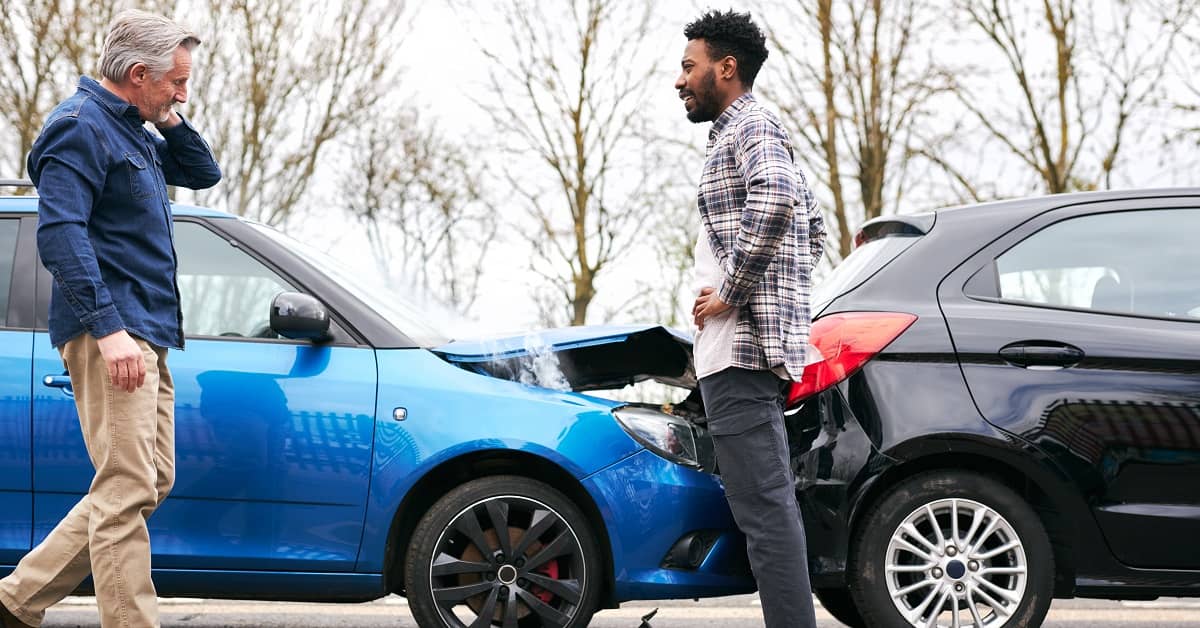
Rear-end accidents are extremely common. They can also be extremely dangerous, potentially resulting in serious injuries to the head, neck, and other areas of the body.
Determining who is at fault for a rear-end collision is essential for recovering compensation for your medical expenses, lost wages, and other damages. The tailing driver is generally at fault for these crashes, but this isn’t always the case.
An experienced car accident lawyer can investigate the rear-end collision to determine who is at fault. Contact Hauptman, O’Brien, Wolf & Lathrop today for a free review of your case.
Is the Driver in the Rear Always At Fault?
Drivers have a responsibility to be aware of the road in front of them. If a vehicle slows down or comes to a sudden stop, the driver in the rear is expected to do the same. Drivers are also expected to keep a safe distance. If the driver in front brakes or decelerates, maintaining distance will allow the vehicle in back to come to a complete stop.
Unfortunately, too many accidents happen because a tailing driver is distracted or driving aggressively. These behaviors make it difficult or impossible for motorists to respond quickly enough when the driver of the car in front of them suddenly applies the brakes. In the blink of an eye, this type of behavior can result in rear-end collisions that lead to serious accidents and injuries.
So, if the driver in back was on the phone or tailgating, it is very likely that he or she will be found at fault for the accident. That said, in many car accident cases the driver in the rear is not always at fault. There are scenarios where it could be the driver in front who is held responsible for a rear-end collision.
When Is the Driver in Front At Fault?
Motorists traveling in front of other vehicles also have a duty to drive safely. Negligence on the part of the lead driver can also cause a rear-end collision.
Potential examples include:
- A driver turns in front of another vehicle, leaving the driver in back with too little time to brake
- A driver crowds in front of another vehicle when merging into traffic
- The driver in front is fatigued, distracted, or intoxicated – this can cause motorists to miss oncoming hazards, apply the brakes suddenly or erratically, or “see things” and brake for no discernible reason
- A driver backs into a vehicle behind him
- The brake lights on the lead vehicle malfunction or are inoperable, providing motorists in the rear with no warning if the driver in front brakes or comes to a stop
Fault for a car accident can be shared. The lead driver in a rear-end collision may be held partly responsible for an accident but not fully.
If the evidence shows that you share some of the fault for the auto accident, you are not barred from recovering compensation. (So long as the other party or parties are 50% or more at fault.) Rather, the damages you can recover will be reduced based on your proportion of negligence.
Determining Fault for a Rear-End Collision
There are a number of steps you can take after a rear-end accident to determine who is responsible. First, you should call 911 if you or anyone else suffered injury in the crash. Your ability to take further action will depend on the seriousness of your injuries.
Next, the following steps can help you start building your car accident case right after the accident happens:
- Take photos – pay special attention to the position of the vehicles and any damage to the roadway (such as skid marks, debris, etc.)
- Speak to any witnesses who saw the accident
- Make note of any weather, lighting, and roadway conditions
- Provide a statement to the police – the responding officer will investigate and potentially make an initial determination of fault
One thing you should absolutely not do is admit fault – not to the other driver, not to the police, and not to anyone else. As you can see above, fault for a rear-end accident is not always as straightforward as it seems.
The evidence may show that the other driver was in the wrong, or that fault for the accident is shared. However, if you admit wrongdoing, it can be difficult to overcome even if the facts are on your side.
Contact a Car Accident Lawyer Today
The prevailing wisdom is that the driver in back is responsible for a rear-end collision. However, no two accidents are exactly alike, and it is important to protect your rights no matter the position of your vehicle in the crash.
Attorneys at Hauptman, O’Brien, Wolf & Lathrop have more than 298 years of combined legal experience. We have the knowledge and resources to investigate the crash and present compelling evidence on your behalf.
Our goal is to recover full and fair compensation for our clients. This often means going up against major insurance companies and, in some cases, going to trial. No matter where your case goes, you can count on us to provide the highest quality of personalized service paired with aggressive representation.
For a FREE consultation, please call Hauptman, O’Brien, Wolf & Lathrop at (402) 241-5020 today. Our auto accident attorneys serve clients in Omaha, Sarpy County, and all of Nebraska and Iowa.



They answer my questions. Helped me along the way. There was alot of papers that needed to be collected and I trusted to take care of me. After two years I am glad it is done. Thank you Jermery Nicole and Andrea. You made going through this better with everything esle in my life at the time.